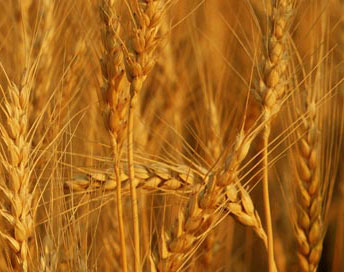| |
A deliciously fresh pine nut, also known as pignolia nut, ideally used in baking, cakes, cookies, salads and pesto sauce.
Health Tips
The best thing about pine nuts is their high concentration of monounsaturated fat, which paves the way for a healthier cardiovascular system. The vitamin D in pine nuts leads to stronger bones and teeth, by improving the body's ability to absorb calcium, and vitamins A and C may sharpen vision and boost the immune system.
The pine family is one of the most familiar groups of evergreen trees in North America since it furnishes most of our traditional Christmas trees, provides a strong, excellent softwood timber and is an important source of turpentine and rosin. Less known perhaps is the fact that some members of the pine family also bear edible seeds, commonly referred to as nuts. Worldwide, approximately 100 species of true pines are recognized; of these about a dozen in the Northern Hemisphere produce nuts of sufficiently high quality and desirable flavor to make them worth gathering.
'Pine nut' denotes any of these edible nuts. Other distinctions should be made, however, depending upon the geographical are involved. The most common designation for nuts in Europe is ?pignolia?, a term which refers to pine nuts of the Italian stone pine, grown for the most part in Spain, Portugal, Italy, and North Africa. Nuts of a different species called ?pinion?, a name derived from the Spanish word for pine nut, are produced in the western United States. These pinon nuts come mainly from the Colorado pinon tree, a two-needled pine which grows wild in the states of Colorado, New Mexico, Arizona, and Utah. Different varieties of pine nuts are also grown in Russia, Korea, China and Japan. In these other countries the pine nut is an important food locally, but is not commercially important. China is one of the leading exporters of pine nuts. In the United States nut trade, ?pine nuts? may refer to the European pignolia, the North American pinon or the Chinese pine nut.
The pine nut dates from a remote period in time. Hosea was a minor Hebrew prophet who lived during the eighth century B.C in the kingdom of Israel. The Old Testament mentions the nut in Hosea 14:8 'I am like a green fir tree. From me is thy fruit found.' Many Biblical scholars believe that this tree was the stone pine and the edible fruits referred to was the pine nut. The ancient Greeks and Romans appreciated the taste of the pine nuts. Among the Greeks, the stone pine was held to be a tree sacred to the god Neptune. Records exist that mention consumption of pine nuts around the beginning of the Christian era. The kernels were eaten, preserved in honey, during Pliny?s time. Archaeologists have found pine nuts among household foodstuffs in the ruins of Pompeii, destroyed by the violent eruption of Mount Vesuvius in 79 A.D. The Roman Legions carried pine nuts among their provisions, evidenced by pine nut shells uncovered in refuse dumps of Roman encampments in Britain which date from the middle of the first century.
During harvest, the cones of the tree are shaken to remove the kernel. Once removed, they are dried further before being processed in a milling station to remove the kernel from its hard outer shell. The kernels and shells are separated by sifting; the testa, or thin skin which still covers the kernel, is then removed. Thereafter, the kernels are graded and sized. Superior, unblemished, shelled kernels, both large and small, are reserved for the export market; the remaining kernels are sold locally or utilized in prepared foods.
Although pignolia nuts may be eaten out of hand, raw or roasted, they have the distinction of being the only nuts used predominantly as ingredients for cooking. For many centuries in European cookery, they have been blended with meats, fish and poultry, and have been used in many different sauces.
Pine nut development in North America is modest in comparison with that in Europe. The Italian pine tree, with superior timber, is larger and grows faster than the stunted pinon of the southwestern United States. Italian stone pine plantations are well established in Mediterranean Europe, while the American pinon remains mostly neglected and uncultivated.
Today the Chinese pine nut is often found in the United States because of its availability and price. The Chinese and Italian pine nuts are already taken out of the shell and can be eaten raw as bought, roasted, or used in cooking. The pinon nut grown primarily on Indian reservations in the Southwest United States is normally roasted in the shell. Their availability is rather scarce, and the pinon nut must first be removed from the shell prior to consumption. |



